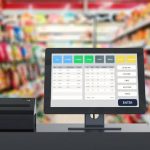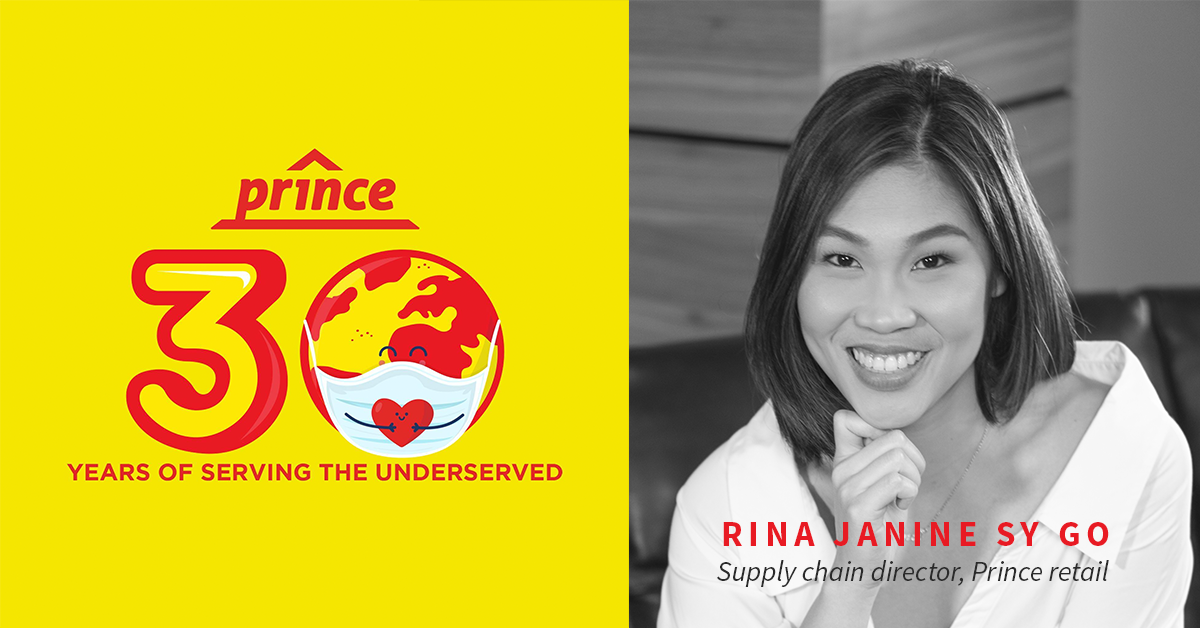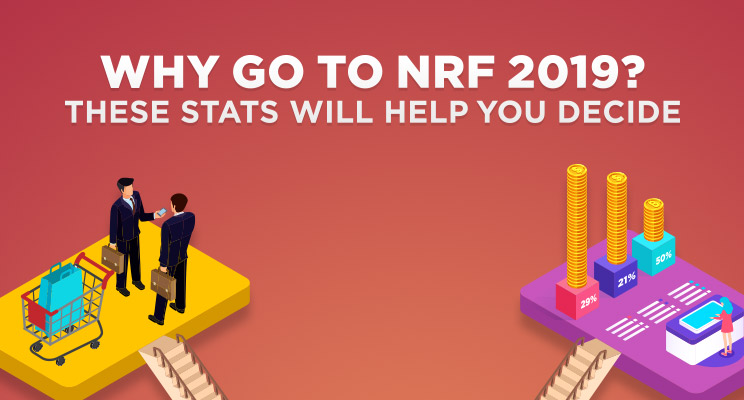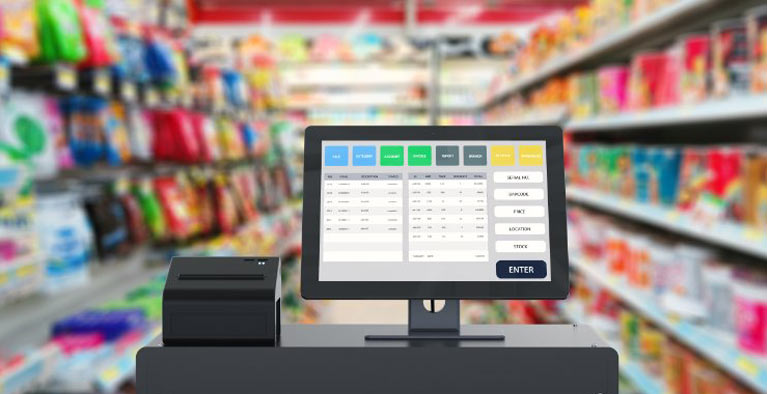
Articles in Category : Supplier Collaboration
Maya makes use of machine learning, deep learning, advanced analytics, cloud computing, natural language processing (NLP) and generation (NLG), intent analysis and context-aware computing. But all you need to do is ask.
2. Re-interpreting Algorithmic Processing
Today’s digital business is generating millions of data points, across sources, every day. Taking traditional hierarchical approaches to analyze data is just not physically viable. Your solution should be able to conduct auto-discoveries, root-cause analyses, and auto-recommend best outcomes, based on simulations.
Manthan’s analytics platform algorithmically processes anomalies, outliers, and exceptions to recommend actions that can achieve clear, smart goals.
3. Re-interpreting Solution Engineering
As analytics processing becomes complex, analytics experience needs to become intuitive. Solutions need to be designed for the real decision makers and should embed real business contexts.
Manthan’s solutions are designed to bring together advanced analytics and algorithmic capabilities for specific use cases across retail. Our solutions also come with the ability to scale and to incorporate new use cases.
4. Re-interpreting Data Management
The digital business generates much more data than the traditional one, with new data sources emerging all the time. While some of this data drives repeatable use cases built around standard business processes, you also cannot lose sight of new use cases that elevate the customer experience.
Manthan offers a full-featured data management platform that can deliver production-grade enterprise analytics in a governed model. But at the same time, it also drives rapid experimentation and innovation with an architecture that can ingest and mash new data sources at scale in a data lake architecture. This supports on-demand data-processing, giving businesses real-time decision-making abilities.
We have what you need.
We have re-interpreted analytics delivery with AI. And an elastic cloud infrastructure and server-less computing capabilities provide the necessary performance and agility you need from a new age data a platform that can deliver real-time decision-making.
Tomorrow’s technology does not require a screen in front of you. Or you in front of a screen. It will walk with you, whispering real-time recommendations in your ear, based on intense, granular analysis.
That’s truly democratized AI. And that’s what we have for you, today.


A Day In The Store – A Bedtime Story for Retail Store Operations
- Charlie’s factory was a multi-million dollar store with toys that all the grown-ups seemed to love.
- They had a million registered repeat customers transacting with them every month and they brought in close to 55% of their monies.
- Using an analytics tool, their leader Chuck and their little IT elf John managed to build an awesome model on behavioral segments of customers. Their output was 6 clusters with varied behavior.
- They built a beautiful promotion strategy for different segments and executed them.

The year 2018: Predictions for Convenience Stores
- Convenience chains are increasingly turning to predictive and prescriptive analytics to make automated decisions that are based on data
- Merchandisers and store managers are being empowered to make decisions on the go
- Customers are expecting personalization and as a result, brands are doubling down on digital customer engagement
- Have a system that can prescribe profitable and timely decisions for merchandising and store managers about assortment, inventory, pricing, promotions and day-to-day store operations
- Empower marketers to identify revenue generation opportunities and predict customer behavior by understanding customer behavior and preferences
- Improve customer engagement by executing machine learning based personalized promotions in real time across email, SMS, mobile app and social
- Create a high performing agile supplier network through comprehensive insights, process automation, and data integration between the retailer and suppliers
- Implement local pricing strategies across stores based on competitor pricing and customer segment needs

Retail Data Monetization: Are you sitting on top of a retail goldmine?
The majority of sales generated in the 4.5 trillion dollar US retail market is in-store and the volume of transaction data collected at various points in the trading process is immense. This data is a treasure trove of customer insight as well as product performance. While many retailers mine this data to gain specific insights into understanding their shoppers better, the possibilities that such data analysis opens up is largely untapped.
In an ultra competitive market, retailers can generate an additional revenue stream with proper data monetization techniques.
By sharing the data that otherwise sits idle in their internal systems, retailers can pave the way to a collaborative approach to sustain shopper demand while generating sizeable revenue regularly.
Real-time Granular Data Sharing for Actionable Insights
Jack Hoe, manages the data at a high end supermarket chain. Every quarter he religiously downloads terabytes of retail trade data in reams of excel sheets and shares those with a syndicated data firm. He believes this not only makes him earn a wee bit from an otherwise data dump but also helps build a better informed retail scenario.
Samantha, his counterpart from another major supermarket store has a different approach. She too shares the high volume data, but not with the syndicate. She shares it directly with the suppliers almost real time. Suppliers are willing to pay a fee for packaged insights since it helps them act quickly and boost category share. She has not only built a steady revenue stream from data sharing, the promotions her stores run and stocks that they manage to result in a better shopper experience.
Jack and Samantha represent the traditional and advanced data sharing models respectively. The data shared by Jack with research organizations is part of a high-level data dump across the sector which is analyzed and reported every quarter. These reports provide generic insights and come too late in the day for manufacturers and suppliers to tweak their strategies in real-time.
On the other hand, with the help of advanced and secure data sharing tools Samantha shares, not just data, but contextual retail insights in real-time, giving the suppliers an edge in demand forecasting, and promotion planning. No guesses here on who is ahead in the game!
Highly Targeted Promotions and Improved Promotional ROI
With retailers and their suppliers on the same page getting SKU level visibility, the chances of any product going out of stock is virtually nil. The contextual and relevant insights help suppliers in improving their category share by understanding product, category and shopper demand better.
As a result, shoppers experience much more targeted promotions, sales go up, and retailers and suppliers see higher promotional ROI. By directly influencing demand at the point of action, retailers and suppliers can thus drive sustainable growth.
Ease of Adoption and Quick ROI
The ability to mine data and gain contextual insights is the biggest differentiator in the race to stay competitive in retail. As per CGT-RIS Data Share study 2014, over 54% suppliers receive real-time data from retailers and more than 70% of both retailers and suppliers agree that data sharing has improved their sales and promotions while promoting a better dialogue. However, sharing raw data dumps doesn’t cut it for most suppliers. They will still need to make sense of the data, using analytical tools.
Suppliers could be more interested in accessing granular, packaged retail insights that are easy to consume. If provided through a centralized platform, and it helps them to increase revenue, why wouldn’t they be willing to pay a small fee to access these insights regularly?
Today SaaS-based collaboration and data sharing technologies are easy to acquire and quickly integrated into existing ERPs. Available through subscription models, the technology investment in building retail data sharing capabilities, that lead to easy data monetization, is well within the reach of retailers.
Retail data monetization has proved to be a cash cow for many retailers with a vast majority recovering the cost of the data sharing platform in less than six months!
If you were certain to earn 10 dollars just by investing a dollar, wouldn’t you do it? It’s not a magic pill, just the result of intelligent supplier collaboration.
Learn more about how Manthan’s Vendor Link can help you gain quick ROI from your supplier collaboration efforts.

Do Not Let Safety Stock Hold You Down: Stock What Your Customers Want

Smarter Trade Promotions Funding for Smart Retailers
A major chunk of the supplier’s profit is direct towards funding promotions at Retailer outlets- as high as 30% of the gross sales of their products. Retailers should be smiling at this promotion funding and putting in all their marketing might to put this huge amount to the best use.
But ask any retailer and he will tell you while the numbers look good on paper, getting the cash at hand is a tough and tedious process. For one, the sum to be spent on promotions, agreed between the retailer and supplier is released to the retailer only after the promotions are over and the proof of pudding is tasted, which is anywhere between 3 to 6 months. During this time the retailer has to sweat on not only the mechanics of the promotion but in maintaining a detailed financial record of the trade promotion spend.
This being a specialized job, most retailers hire expert auditors who pour over promotion records, spend hundreds of hours in calculations and creating reports. Audit firms bill anywhere between 20 -30% of the recovery amount that the retailer is due from the supplier. Not a very inspiring picture, right?
Now, let’s tweak the scene a little. The supplier allocates trade promotion funds and the retailer works out the details, focusing his energies on matching customer expectations and maximizing the impact his marketing efforts can bring. The entire promotion fund is broken down into weekly / monthly campaigns across different categories and individual products.
As the campaign rolls out both the supplier and the retailer are able to monitor the progress real time, getting granular details right at the SKU level. The financial details, down to each penny spent, is recorded and available for review anytime. The retailer can furnish the details and claim his money from the supplier almost immediately, without employing a battery of auditors and paying them a large chunk from his pie. The supplier too can get a much clearer picture of the performance of his products and understand customer preferences to fine tune his category and product strategies.
Isn’t this a win-win scenario for both the supplier and the retailer? Sure it is! Wouldn’t you like to know how this is possible? Well, it is no rocket science.
What we discussed here is an example of well planned and executed collaboration between the supplier and the retailer, also known as “Shelf-Centered Collaboration”. This practice is gaining ground as it brings the suppliers and the retailer on the same page with an objective of effective promotions management, enabling real time insights and building a stronger bond with the end consumer. Such collaboration is possible when essential information is available to both the parties simultaneously. Retailers can opt to share vital information with individual suppliers through emails and data downloads. Another, and more broad-based approach is to connect various suppliers and retailers on a common platform or portal. Here both retailers and suppliers share a platform and gain real time insights across stores. In fact, most of the suppliers and retailers are moving towards portal based collaboration as it provides transparency and improves efficiency. By streamlining communication channels, supplier collaboration platforms help in reducing procurement costs and optimizing real time decision making prowess.
Given the magnitude of trade promotion funding and high stakes it carries, a portal based approach has become essential today. As per Abeerdeen group’s B2B collaboration and BI study, 83% of industry leaders already have a B2B collaboration initiative in place. It is proving to be a strategic advantage to the early adopters as it provides for collaboration in managing trade promotions and budgets. In addition, this approach also helps in reducing supplier risk, building agility in supply chain management and making the process more resilient altogether. The time for better collaboration is now and those falling behind may lose on a major head-start.
Join the Retail Collaboration Network on LinkedIn, and connect with experts and users interested in Supplier Collaboration.

3 Steps to Boost In Store Shopper Experience, Is Store Operations the key?

Can Collaborative Category Management Drive Sustainable Like-for-Like Growth in Retail?
- Attribute analysis (like flavor, color, pack size, cuisine, gluten free etc) :
- Which are your top selling products, & which the product attributes make items fly off the shelves?
- What’s the right packaging size for your retail format? For e.g- smaller pack sizes sell more in convenience stores than hypermarkets.
- Which attributes of your products directly impact customer purchasing decisions in various categories?
- Is there a marked difference in product attribute preferences across geographies & demographic profiles?
- Does the channel of sale determine the attributes of potential top selling products? For e.g. products where touch & feel does not play an important decision making factor sell more on e-Commerce channels.
- Price band analysis (>$5, $5-$10, $10>$15 etc) :
- Are your shoppers price-sensitive?
- Do they behave uniformly while purchasing across categories?
- Do you have gaps at different price band levels?
- Seasonal trends (Halloween, party supplies, decorations etc)
- Do you have seasonal spikes in sales of specific categories?
- Do you forecast for these seasonal items & collaborate with suppliers to get these on time in full?
- Do you stock up in the store before the sale season?
- EDLP(Everyday Low Pricing) product analysis (list of products & volume share)
- Do you have product offerings in the ELDP category?
- Do you forecast volume of these products & share insights with your suppliers?
- Do you optimize prices for ELDP products?
- Product affinity analysis (which products are bought together)
- Do you share insights on shopper basket with your suppliers?
- Do you encourage bundling & cross selling across suppliers?
- Shoppers’ unfulfilled needs (New product opportunity)
- Do you have a system to identify unfulfilled needs of shoppers in your stores?
- How fast can you collaborate with suppliers & bring these new products onto the shop floor?

Retail Data Sharing: Put Your Idle Data To Work And Boost Profits
Data collaboration
Do not just rely on point of sale data; rather look for details from all possible sources in and around the store to garner information that can truly help. Inventory movement trends, stock replenishment cycles, demand spikes, shopping trends, fast and slow-moving products, product visibility impact, store-help induced sales, gauging impact of promotions, collecting shopper feedback, trend analysis, shopper demographics, periodic sale comparison, order-to-delivery time lag, ordering cycles and return to vendors are some key areas from where valuable data and insights can be extracted. Processes and technologies should be utilized for collecting, storing, and easily retrieving data when needed.Analytics and action
The retailer has to take the lead in designing seamless workflows and utilizing technologies for integrating and analyzing data. This will offer ready-to-use and valuable insights that can drive the benefit extraction wheel with supplier and manufacturer coordination. Let’s now look at the fundamental aspect of putting the collected data to full use:Willingness to share and benefit
A 2014 study on ‘Shared Data’ conducted by CGT and RIS states that 43% of retailers do not share any data with their suppliers. Retailers should step up and look seriously into this and assess the reasons for the lag, which may include an unwillingness to share data, unawareness about added benefits, lack of properly collected data, difficulty in establishing proper data sharing channels, and use of needed technology. It’s time retailers fast track on this to not only increase profit margins but also to heighten shopper experience.Establishing coordination
Mutual understanding, transparency, and awareness of the benefits can lead to improved retailer-supplier collaboration. This has to have impetus from both the stakeholders as coordination should be established ideologically, methodologically, and pragmatically. The right technology, coordinated processes, and co-strategic efforts can make the process highly tangible.The ‘what’ and the ‘how’ of sharing
Though ‘what’ and ‘how’ to share evolves from the premise of mutually agreed on terms and processes; it’s the retailer who anchors most of the effort. Retailers should document the quality of data and information exchanged which induced better, palpable action and results. The same stands true for the ‘how’ aspect of sharing data. Utilizing cloud-based systems, centralized data repositories and pre-packaged insights can make the process of data sharing easy. When suppliers and retailers can get the relevant information they need without spending too much time, then the mutual decision-making process will become faster and profitable. Technology obviously binds coordination, but compatibility of technology among the coordinating members is really important. Though the nature and size of the members define the technology they use, there has to be a common technological platform where compliance is maintained.Appending your benefit list
More than listing the common benefits of putting data to ideal use through proper collection and sharing, it’s the shift in the way you perceive the benefits of supplier collaboration that counts. The below chart from the 2014 ‘Shared Data Study’ conducted by CGT and RIS shows the top 10 benefits of data sharing:| 2014 | SUPPLIER BENEFITS | RETAILER BENEFITS |
|---|---|---|
| 1 | Improving on-shelf availability | Lower inventory and safety stock levels |
| 2 | Better demand forecast accuracy | Improving on-shelf availability |
| 3 | Lower inventory and safety stock levels | Improving promotion design, forecasting, and execution |
| 4 | Sensing product acceptance in new product launch execution | Better new product introductions |
| 5 | Improving shopper/customer experience | Improving the shopper/customer experience |
| 6 | Sensing of product category changes | More accurate demand forecasts |
| 7 | Demand insights to drive new product development | Better category management |
| 8 | Improving promotion design, forecasting, and execution | Improved joint replenishment programs (VMI, DSD) |
| 9 | Better sales force targeting and campaign execution | Better store execution |
| 10 | Reduction of demand latency | Improved planogram management |

Prevent Out-of-Stock and Empty Aisles to Delight Your Shoppers
As per a Harvard Business Review report, if shoppers fail to find a product that they are looking for, 7% to 25% of them will not replace it with a substitute and around 21% to 43% of them will go to another store to buy the item. Now this clearly negates the section of retailers who believe that shoppers will pick an alternate product from the same category if they fail to find the intended product. And due to intense competition, retailers also must ensure proper product spread and relevant inventory to prevent empty aisles.
There are three primary aspects to this which need to be addressed by all competitive retailers:
1. Stock movement and performance
Knowing stock movement not only ensures timely inventory but also leads to greater demand estimation which prevents out-of-stock situations. Here are some key points that need to be looked at:
Know your stocks
You have to develop a routine which ensures adequate stock at all times by establishing an effective communication channel with suppliers. You have to look at stock refill cycles, daily point of sale data, demand spikes, on-shelf replenishment practices, daily stock reporting, promotion backed sales, and so on. All these activities must be made into a regular process which can then be easily followed.
An analysis conducted by a group of institutions (Emory University, Goizueta Business School) on ‘Retail out-of-stocks’ found that 70-75% of out-of-stocks are a direct result of retail store practices (either underestimating demand or having ordering processes/cycles that are too lengthy) and shelf-restocking practices (product is at the store but not on the shelf). This clearly mandates the need to develop proper inventory management processes and store practices to avoid out-of-stock situations.
Know your sale
The process of selling involves a lot of variable factors and is also subjected to many targeted activities, all put together, you should be able to estimate the rate and nature of your sale. You have to identify how your products fare at different shelf locations, what impacts the product push at various store locations, ratio of sale difference between regular, weekend, festive and promotional periods, and so on. Once you start looking for these details you will begin to finely conclude on the nature, ratio, and rate of sale at all times. This is really crucial to always keep your aisles filled with products which your shoppers demand.
Know your products
The obvious off-shoot of knowing your sales performance is knowing how your products perform in various categories. Looking at point-of-sales data gives you an overall picture of sales and inventory status but analysing it leads to proper understanding of performance of your products. This analysis will lead to identifying aspects like most demanded and least demanded products, impact of promotions and festive occasions on most and least demanded products, identifying self-sustaining and promotion based products, and so on. Now if you start looking at these broadly you can easily conclude on product priority and stocking priority, you can also look for more suppliers to support additional demand for products based on your priority list.
2. Promotion and marketing impact
Apart from the general demand spikes backed by promotions and overall marketing campaigns, as a retailer you should assess the true impact of the promotions. For this, you must get a broader estimate of the average industry sale expectation for every promotion and compare it with the actual sale made. If possible, you can also cross verify competing store’s promotion backed data and look for differences. If there is a marked negative difference from the average expected sale then the need to look for in-store issues like out-of-stocks, poor visibility, ineffective promotions, etc., need to be looked at. And if you have exceeded expectations you have to identify aspects and processes which did it for you. These could be better supplier responsiveness, smoother supply chain, right inventory, better visibility, and so on. This approach, over a period, will give you key performance indexes to lift your sales and anticipate early stocking.
3. Collaboration with suppliers
Nothing converges without supplier collaboration. Retailers can achieve optimum product stocking, estimate promotional sales, identify overall product performance, improve refill cycles, do demand forecasting and develop smarter stocking processes if they work coherently with suppliers. Retailers have to consider suppliers as their extended arm, and vice versa, for preventing empty aisles and also preventing overstocking at all times.
As a retailer you can reduce cost of inventory with real-time inventory flow based on process and analytical collaboration with suppliers, and thus, reduce out of stock situations. By identifying the key performance indicators and constantly working on them, you can increase your sale and shopper loyalty. Retailers and suppliers can achieve clarity of supply cycles, avoid unnecessary trips and overstocking at both ends, improve distribution and prepare for trends with reliable demand forecasting.
Conclusion
Establishing coordinated processes with your supplier network can bring out the obvious advantages of optimizing inventory and preventing empty aisles. This calls for building collaborative models, enabling intelligent technology, avoiding petty haggling, and creating a win-win environment which delivers significant benefits across the supply chain.
Join the Retail Collaboration Network on LinkedIn, and connect with experts and users interested in Supplier Collaboration.











